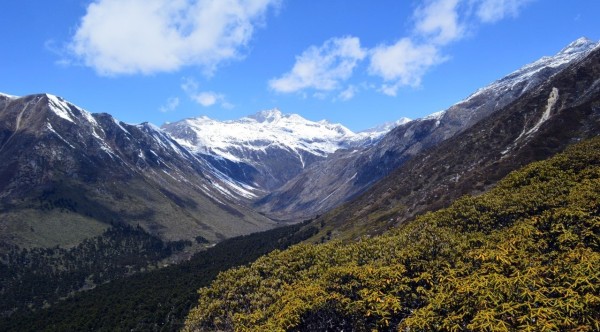Spotlight on the snow leopard: Distribution and population
This holiday season, WWF is introducing six new species for you to adopt and take home, including the snow leopard. We’re bringing you a special six-part blog series on the snow leopard, the most mysterious member of the world’s big cats.
Snow leopards are found in the alpine and sub alpine habitats of the central Asian Mountains. They prefer to live in landscapes dominated by cliffs, rocky out crops, gullies, and vegetation mostly comprised by shrubs and grasses and devoid of large dense patches of forests. The highest part of their range is usually between elevations of 3,000 to 4,500 meter above sea level, while in their northern range limit, they are found at 900 to 2,500 meter above sea level.
Currently, snow leopards occupy nearly two million square kilometers of area spread across twelve countries including Afghanistan, Bhutan, China, India, Kazakhstan, the Kyrgyz Republic, Mongolia, Nepal, Pakistan, Russia, Tazikistan, and Uzbekistan. Despite their wide spread habitats, snow leopard numbers are known to be decreasing. For example, in the Kyrgyz Republic, snow leopards have become locally extinct in some places such as in the certain parts of Mongolia. At present, their numbers are estimated at 3,500 to 7,000 individuals in the wild. China has the largest extent of habitats and the greatest snow leopard numbers. We, however, do not have information on the exact status of snow leopard populations due to the lack of range-wide systematic studies.
By symbolically adopting a snow leopard, you are helping to support WWF’s conservation efforts. Adopt a species today at shop.wwf.ca.




